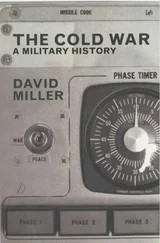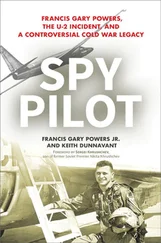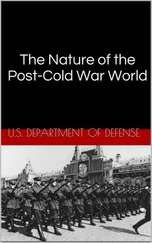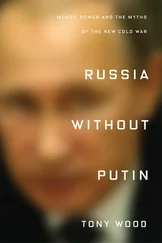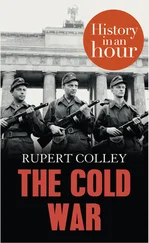In mid-1974, the economic outlook for the US was dire. The oil embargo had quadrupled oil prices and inflation soared, even as unemployment was rising. For the oil exporters, however, the sharp rise in oil prices had been a bonanza. In 1974, members of the Organisation of the Petroleum Exporting Countries (OPEC) had a balance of payments surplus of $67 billion. 81 None benefited more than Saudi Arabia which, with the largest reserves of oil in the world, enjoyed a surge in its wealth. Bedouin shepherds, whose fathers and grandfathers had ridden across the desert on camel back with Ibn Saud, were suddenly driving Datsun pick-up trucks, propelling Nissan to the number one spot in vehicle sales in the country.
On an overcast morning in July 1974, the newly appointed Treasury Secretary boarded an 8am flight from Andrews Air Force Base to embark on a secret mission. The official purpose of his two-week trip was to conduct a tour of economic diplomacy across Europe and the Middle East. However, the real mission that he and President Nixon had agreed was to take place during a four-day layover in Jeddah, Saudi Arabia. His objectives were to neutralise oil as an economic weapon and to persuade King Faisal to help finance America's rising government deficits with his country's newfound oil wealth.
On the surface, the outspoken former bond salesman seemed uniquely ill-suited for such a delicate diplomatic assignment. Just a week before his trip to Saudi Arabia, Simon had publicly called the Shah of Iran, a close US ally, a ‘nut’. Nevertheless, his earlier career had given him an appreciation of the appeal of US Treasury debt and why this would be attractive to the Saudis.
Up until that point, Saudi Arabia had been parking its petrodollar surpluses in the Eurobond market. However, the emerging market government and corporate debt that featured prominently in that market exposed the Saudi Treasury to credit risks, and those securities were far less liquid than those issued by the US government.
It took several months of negotiations after Simon's initial trip, but the US and Saudi Arabia finally reached a deal. The US agreed to buy oil and to provide the kingdom with military aid and equipment, while Saudi Arabia promised to invest billions of its petrodollar surpluses into US Treasuries to finance US government spending.
At the last minute, King Faisal demanded one key final term: that the country's purchases of US Treasuries should remain strictly secret. The US had offended Arab sensibilities just a year before with its military support to Israel, so publicity around this deal might have been embarrassing to the kingdom. The bearer nature of Eurobonds allowed the country to keep its holdings secret, and it sought the same anonymity for its investments in US Treasuries. Under the arrangement agreed between the US Treasury and Saudi Arabia, the Saudis were allowed to bypass the normal competitive bidding process for buying Treasuries and the sales were excluded from the official auction totals. By 1977, Saudi Arabia had accumulated around 20 percent of all Treasuries held overseas. Remarkably, this arrangement remained secret for over four decades until a dogged journalist from Bloomberg News uncovered it through a Freedom of Information Act request in 2016.
Arguably, Saudi Arabia would have received a better return if it had invested in equities or in higher-yielding bonds. However, William Simon's instincts about the attractiveness of the safety and liquidity of US Treasuries had been spot on. What is more, what the Saudi regime received in return was far more valuable than the financial yield on its holdings. Under what would become known as the Carter Doctrine, the 39 thpresident proclaimed in January 1980:
Let our position be absolutely clear: An attempt by any outside force to gain control of the Persian Gulf region will be regarded as an assault on the vital interests of the United States of America, and such an assault will be repelled by any means necessary, including military force.
The Carter Doctrine was, in fact, a public renewal of a commitment that Harry Truman had made in a letter to King Ibn Saud in October 1950 that the US ‘is interested in the preservation and territorial integrity of Saudi Arabia’. 82 America's increased thirst for Middle East oil by the 1970s committed it even more to maintaining security and stability in Saudi Arabia. William Simon's deal provided the financial means for the US to uphold that commitment.
This oil-for-dollars-for-Treasuries agreement was an early example of a type of vendor-financing arrangement that the US has effectively entered into with almost all major surplus countries with which it runs balance of payments deficits. As China emerged as an export juggernaut in the early 2000s, it too would accumulate large balances of US government securities, with holdings of US Treasuries peaking at $1.3 trillion in 2011, or just over nine percent of the US national debt at the time. 83
These vendor-financing relationships have become politically controversial, as they are also seen as a means for large exporters to artificially hold down the value of their own currencies (by selling them to buy large amounts of dollars) in order to maintain their export competitiveness. Meanwhile, blue collar wages in the US have stagnated and manufacturing operations have been relocated to lower-cost countries. Equally, for large holders of dollar-denominated securities, continually growing US deficits have raised fears that the US would devalue their holdings through currency depreciation or higher inflation – or both.
Ironically, however, the huge amount of US Treasuries outstanding has enhanced the perception about their safety. In times of market turbulence, investors flock to US Treasuries because they are the most liquid asset class and are, in fact, safer than holding cash in the bank. In the US, the Federal Deposit Insurance Corporation (FDIC), created in 1933 to protect depositors against bank failures, insures deposit amounts up to $250,000 per depositor per insured bank. 84 For individuals or institutions with larger holdings, US Treasuries provide greater security because the US government is less likely to default than a bank. International regulations, such as the BIS’s Basel III rules that govern the capital and liquidity requirements of the global banking sector, have further enhanced the demand from major financial institutions by designating US Treasuries as ‘risk free’ for the purpose of calculating banks’ capital needs.
The massive structural demand for US Treasury securities has given the US government almost unconstrained ability to borrow from international capital markets. As discussed further in Chapter 3, however, this capacity is a double-edged sword. The lack of constraints on public spending has contributed to poor prioritisation and overspending. On the international stage, overextension of US policy has led to conflict, while the scale of US borrowings from other countries has led to an accumulation of implicit and explicit international obligations. The demand for US Treasuries has also helped magnify demand for other private US securities and prop up the value of the dollar. This mispricing of capital has, over time, fundamentally impacted the allocation of resources both between the US and other countries, and within the US itself. As imbalances persisted, financial bubbles would inflate and periodically burst with dramatic social and political consequences.
In 1980, Ronald Reagan successfully campaigned for the White House on a promise of smaller government. That promise proved to be empty, as US government deficits ballooned during his presidency. His enormous defence spending eventually exhausted the Soviet Union's ability to keep up, and it imploded amidst the popular dissatisfaction of its own people over the privations to which they had been subjected in the pursuit of dominance over the US. However, amidst the euphoria of the Wall Street boom of the 1980s and America's victorious emergence from the Cold War in the early 1990s, the US and the dollar appeared increasingly unassailable.
Читать дальше


